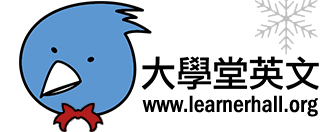what 為表示「物」的複合關係代名詞。what = 先行詞 + 關係代名詞 。
當發現該填關係代名詞的格子前沒有先行詞 (即沒有名詞) 時,就可使用複合關係代名詞。
常用的複合關係代名詞有:what (代替物)、whatever (代替物)、whoever (代替人)、whomever (代替人)、whosever (代替人的)和 whichever (代替哪一個東西)。
複合關係代名詞有兩大特色:
1.前方沒有先行詞(即名詞)。
2.複合關係代名詞所引出的子句,在句中當「名詞」使用。
例句:金錢常引誘我們做不該做的事。
未使用關係代名詞連接兩句時
1. Money often attempts us to do the things.使用關代連接兩句
2. We shouldn't do the things.
Money often attempts us to do the things which we shouldn't do.改成複合關係代名詞:複合關係代名詞 = 先行詞 + 關係代名詞。表示「物」的複合關係代名詞為what。
[ 先行詞 ] [ 關代 ]
Money often attempts us to do what we shouldn't do. [ 代替物的複合關代 ]請注意 "what" 和 "that" 關係子句的差別。關代 what 引出的是 "意思不完整" 的句子;而關代 that 引出的是 "意思完整" 的句子。請比較下列兩個例句:
例句:他辭職了這件事是千真萬確的。
That he quit his job is true.
[ 關代 ] [ 關係子句 ]
That he quit his job is true.關係代名詞 that 帶出一個意思完整的關係子句 [他辭去工作],整個句子放在句首當新句子的主詞。
[ 主詞 ] [ 動詞 ]
例句:他說的話是真的。
What he said is true.
[ 關代 ] [ 關係子句 ]
What he said is true.複合關係代名詞 what 帶出一個意思不完整的關係子句 [他說,說了甚麼?],整個句子放在句首當新句子的主詞。
[ 主詞 ] [ 動詞 ]


